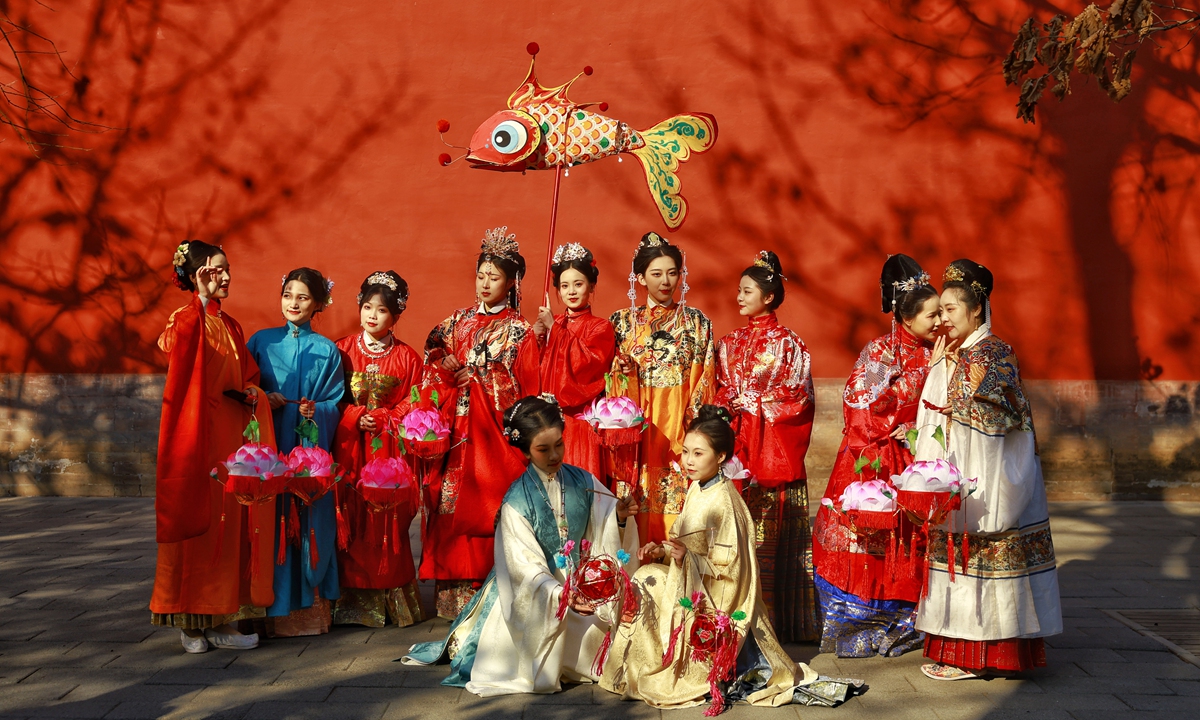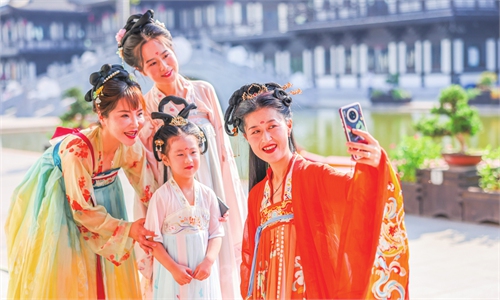
Hanfu lovers celebrate the Lantern Festival at the Ming Tombs in Beijing.
Dressed in long robes, a crowd of young people wander around pavilions and royal gardens, with their flowing sleeves and heavily embroidered skirts gently swaying in the breeze. They are not actors nor actresses on a movie set, but Hanfu enthusiasts at a themed event held in Beijing.
"Over a decade ago, Hanfu fashion was an obscure subculture, but relevant activities nowadays often draw thousands of participants," said Liu Xiang, an organizer of the event.
Benefiting from the growing popularity of social media and a craze for traditional culture, Hanfu, a traditional style of clothing worn by the Han people, has been brought back to the forefront by a new wave of young Chinese devotees, including Liu.
The 1980s-born rocket scientist Liu is also a co-founder of a Hanfu community in Beijing.
The community was founded in 2011 following a Hanfu revival movement that emerged from the desire to express national identity and growing cultural confidence. Since then, Liu has been volunteering to support the group.
"My passion for Hanfu came from two of my friends who are fans of traditional Chinese clothing," Liu said. Her interest grew as she learned more about the culture behind it and acquired her first Hanfu costume.
At first, people dressed in Hanfu in public were occasionally greeted with derision, but as time went on more passersby asked about their clothing, said Liu.
But, more young people wear updated styles of Hanfu as they believe the best way to preserve tradition is to adapt it to modern life.
Besides, Hanfu has also become one of channels for Chinese young people to carry on cultural exchange with people overseas.
Chinese students studying in the UK planned a dinner party featuring traditional Chinese clothing at St. John's College in Cambridge University to celebrate the Lantern Festival, which falls on February 5 this year. The Hanfu society at Durham University also hosted a Hanfu parade and a musical performance in Durham during the Spring Festival holidays.
Some Chinese Hanfu fans living abroad such as Xin Yingzong, a character designer working for Pixar Animation Studios, often grab the attention of passersby whenever they wear traditional clothing and take photos on the street. People usually compliment them on their clothing and ask where they got them, Xin told the Global Times.
Savvy companies and factories smell the massive potential in Hanfu-related industries.
Caoxian county, Heze City in East China's Shandong Province, is one of the major Hanfu manufacturing centers, gathering more than 2,000 upstream and downstream enterprises and creating jobs for nearly 100,000 people. Over 600 clothing processing companies have their own designs with intellectual property rights.
In addition to domestic clients, a bevy of companies in Caoxian reported a surge in foreign orders in 2023.
The Hanfu market in China was estimated to reach 12.54 billion yuan ($1.81 billion) in 2022 and will likely rise to 19.11 billion yuan in 2025, according to research firm iMedia Research.

